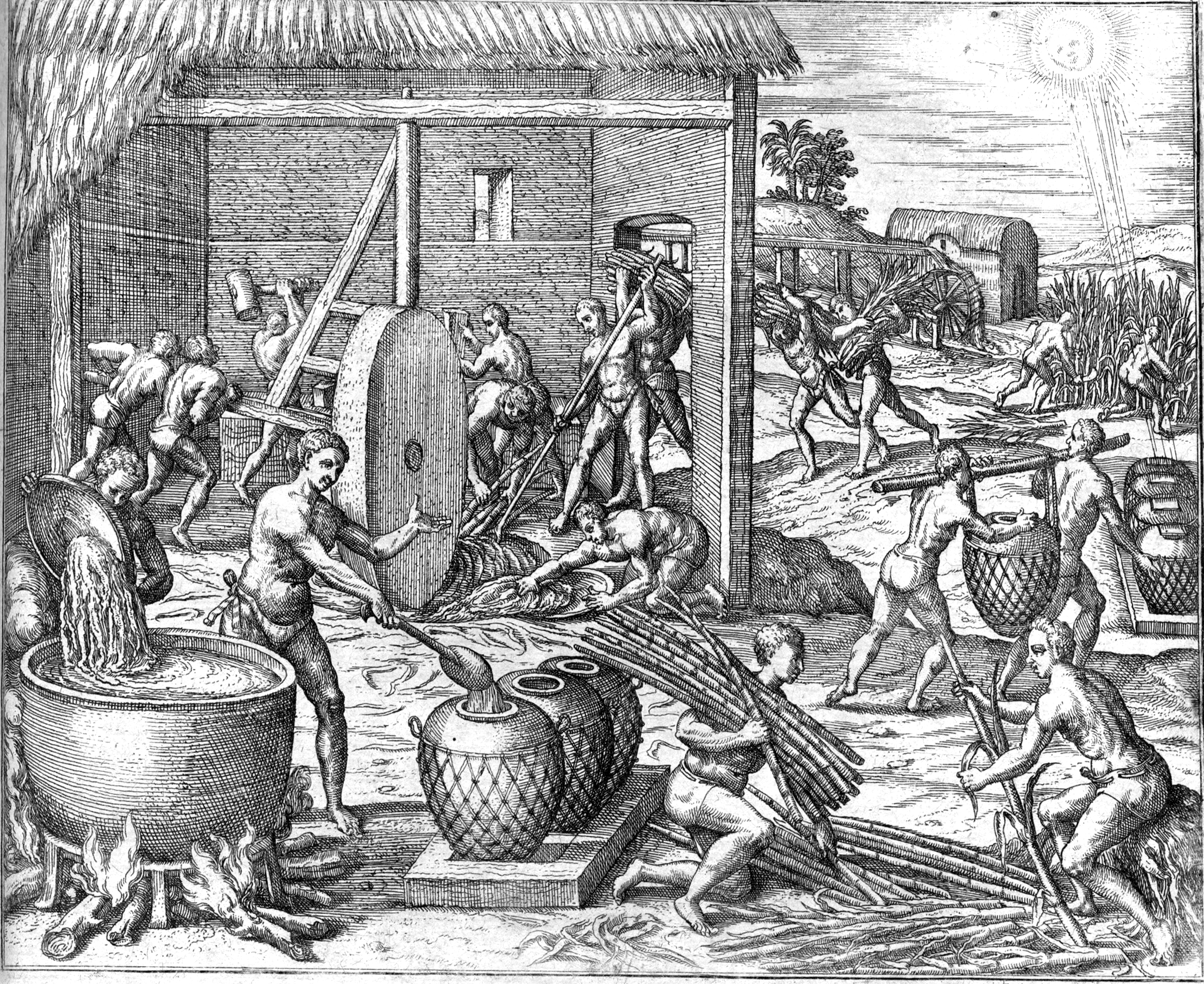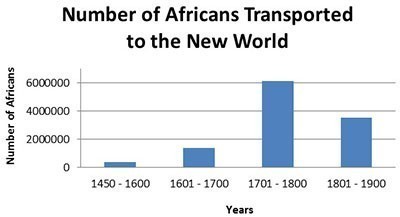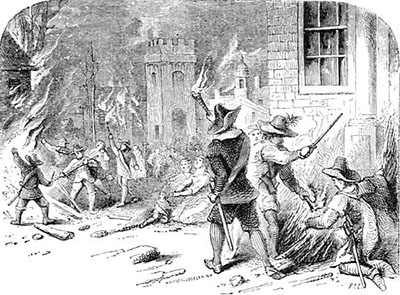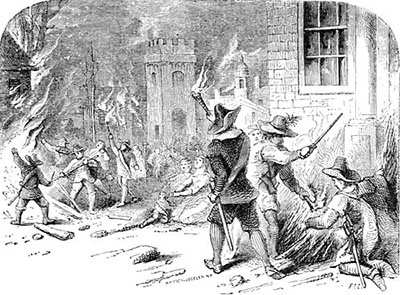Apush Unit 1
1/21
There's no tags or description
Looks like no tags are added yet.
Name | Mastery | Learn | Test | Matching | Spaced |
|---|
No study sessions yet.
22 Terms
Which European country dominated international commerce in the early 17th century?
The Netherlands
Just as the Reconquista of Spain from the Moors established patterns that would be repeated in Spanish New World colonization, the methods used in which one of the following countries anticipated policies England would undertake in America?
Ireland
“On the western side of the ocean, movements of people and ideas . . . preceded the Atlantic connection. Great empires—in the Valley of Mexico, on the Mississippi River . . . —had collapsed or declined in the centuries before 1492. . . . As Columbus embarked on his first transatlantic voyage, the Mexica, or Aztecs, were consolidating their position [in Mexico]; their city was a center of both trade and military might. Tenochtitlán [the Aztec capital] . . . held 200,000 people, a population greater than in the largest city in contemporary Europe. “. . . The Mississippian culture spread east and west from its center, the city of Cahokia, on the Mississippi River near the site of modern St. Louis. It was a successor to earlier cultures, evidence of which can be seen in the great ceremonial mounds they built. Cahokia declined and was ultimately abandoned completely in the later thirteenth century. . . . Throughout the Southeast, smaller mound-building centers continued.”
Which of the following contributed most significantly to the population trend in pre-Columbian Mexico described in the excerpt? Responses
Trade and settlement resulting from maize cultivation
“On the western side of the ocean, movements of people and ideas . . . preceded the Atlantic connection. Great empires—in the Valley of Mexico, on the Mississippi River . . . —had collapsed or declined in the centuries before 1492. . . . As Columbus embarked on his first transatlantic voyage, the Mexica, or Aztecs, were consolidating their position [in Mexico]; their city was a center of both trade and military might. Tenochtitlán [the Aztec capital] . . . held 200,000 people, a population greater than in the largest city in contemporary Europe. “. . . The Mississippian culture spread east and west from its center, the city of Cahokia, on the Mississippi River near the site of modern St. Louis. It was a successor to earlier cultures, evidence of which can be seen in the great ceremonial mounds they built. Cahokia declined and was ultimately abandoned completely in the later thirteenth century. . . . Throughout the Southeast, smaller mound-building centers continued.”
Which of the following best characterizes the Mississippian societies described in the excerpt?
They had mixed agricultural and hunter-gatherer economies that favored the development of permanent villages.
“On the western side of the ocean, movements of people and ideas . . . preceded the Atlantic connection. Great empires—in the Valley of Mexico, on the Mississippi River . . . —had collapsed or declined in the centuries before 1492. . . .
As Columbus embarked on his first transatlantic voyage, the Mexica, or Aztecs, were consolidating their position [in Mexico]; their city was a center of both trade and military might. Tenochtitlán [the Aztec capital] . . . held 200,000 people, a population greater than in the largest city in contemporary Europe.
“. . . The Mississippian culture spread east and west from its center, the city of Cahokia, on the Mississippi River near the site of modern St. Louis. It was a successor to earlier cultures, evidence of which can be seen in the great ceremonial mounds they built. Cahokia declined and was ultimately abandoned completely in the later thirteenth century. . . . Throughout the Southeast, smaller mound-building centers continued.”
Which of the following most directly contributed to the advanced development of both pre-Columbian American societies described in the excerpt?
Adaptation to and use of the natural environment for their own benefit
“The isolation of the [native peoples] of the Americas . . . from Old World germs prior to the last few hundred years was nearly absolute. Not only did very few people of any origin cross the great oceans, but those who did must have been healthy or they would have died on the way, taking their pathogens with them. . . . [Native Americans] were not without their own infections, of course. [But Native Americans] seem to have been without any experience with such Old World maladies as smallpox [and] measles. . . .
“Indications of the susceptibility of [Native Americans] . . . to Old World infections appear almost immediately after the intrusion of the whites. In 1492, Columbus kidnapped a number of [Arawak Indians] to train as interpreters and to show to King Ferdinand and Queen Isabella. Several of them seem to have died on the stormy voyage to Europe [in 1493]. . . . In 1495, Columbus . . . sent 550 [Arawak] slaves . . . off across the Atlantic. . . to be put to work in Spain. The majority of these soon were also dead. . . .
“. . . What killed the Arawaks in 1493 and 1495? . . . Columbus certainly did not want to kill his interpreters, and slavers and slaveholders have no interest whatever in the outright slaughter of their property. . . . The most likely candidates for the role of exterminator of the first [Native Americans] in Europe were those that killed so many other Arawaks in the decades immediately following: Old World pathogens.”
Which of the following developments in the late 1400s and early 1500s is depicted in the excerpt?
Europeans undertook voyages across the Atlantic to the Americas in search of new sources of wealth.
“I . . . write an account to Your Majesty as the first [person] to come among these natives. . . .
“These Indian people of New Spain [Mexico] are vassals of Your Majesty. . . . I dare plead with you for a remedy because, for their people to be saved, they are in great need of relief in order to devote themselves at least somewhat to matters of Faith. After all, it is the struggle for their salvation that justifies their discovery. . . .
“I firmly believe that if the decrees Your Majesty sent here for their benefit were implemented, and if the governors and judges did more than pretend to do so, great good would have come to these people. Even more firmly I believe that Your Majesty’s intention is that they be saved and that they know God. For this to happen, they must have some relief, so that with the moderate labor needed to meet their tribute obligation, they can still give themselves wholeheartedly to our teachings. . . . Otherwise, God will have good reason to complain, for Spaniards came to this land and have taken their property for their own benefit, and Your Majesty has extracted great benefit from them, too. . . .
“. . . Your Majesty . . . should know that the Indians who are required to labor for a master in Mexico City in domestic service and bring firewood, fodder, and chickens leave their pueblo for a month at a time. . . . And the poor Indians often have to buy these things because they are not to be found in their pueblos. . . . Take pity on them and consider what is happening to the poor Indian woman who is in her house with no one to support her and her children, for her husband is hard pressed to meet his tribute requirement. . . .
“. . . I advise you that if Your Majesty does not establish that . . . [the Indians] be required to pay tribute only from what they have, within thirty years these parts will be as deserted as the [Caribbean] islands, and so many souls will be lost.”
In the third paragraph of the excerpt, which of the following pieces of evidence does de Gante use to support his argument about the emperor of Spain’s obligations to Native Americans?
The emperor has benefited from the riches acquired in the Americas.
How were European economic systems in the American colonies in the 1500s and 1600s different from existing economic systems in Europe?
Spanish colonists used enslaved Africans to work on plantations.
“[Before European contact] Cahokia [in present-day Missouri] and such other major centers as those now known as Coosa and Etowah in Georgia, Moundville in Alabama, and Natchez in Mississippi were home to highly stratified societies, organized as chiefdoms and characterized by a sharp divide between elites and commoners. . . . Surrounding networks of agricultural hamlets provided food to support the urban centers. . . . “From the Ohio River through most of present-day Canada and down the coast to the Chesapeake were speakers of Algonquian languages. . . . Nearly everywhere [here], villages composed of 500 to 2,000 people were the norm. . . . “[This] Indian country was decentralized and diverse, but not disconnected. . . . Routes of trade and communication, most of them millennia old and following the great river systems, crisscrossed the continent. The goods that moved along them were, for the most part, few and rare. . . . Some closely neighboring people might exchange crucial resources—corn, for instances, for meat or fish.”
Which of the following most supported the development of the commerce described in the third paragraph?
Maize cultivation spread northward from Mexico
“[Before European contact] Cahokia [in present-day Missouri] and such other major centers as those now known as Coosa and Etowah in Georgia, Moundville in Alabama, and Natchez in Mississippi were home to highly stratified societies, organized as chiefdoms and characterized by a sharp divide between elites and commoners. . . . Surrounding networks of agricultural hamlets provided food to support the urban centers. . . . “From the Ohio River through most of present-day Canada and down the coast to the Chesapeake were speakers of Algonquian languages. . . . Nearly everywhere [here], villages composed of 500 to 2,000 people were the norm. . . . “[This] Indian country was decentralized and diverse, but not disconnected. . . . Routes of trade and communication, most of them millennia old and following the great river systems, crisscrossed the continent. The goods that moved along them were, for the most part, few and rare. . . . Some closely neighboring people might exchange crucial resources—corn, for instances, for meat or fish.”
Which of the following best describes the economic system that supported the Native American villages discussed in the second paragraph of the excerpt?
Settled subsistence farming
Which of the following best explains why some European colonists intermarried with Native Americans?
To create economic and diplomatic relationships between Europeans and Native Americans

Historical developments such as that depicted in the image helped advance which of the following/
The spread of Spanish influence in the western hemisphere
What motivated the Portuguese to begin exploration to find a water route to India, China, and the East Indies?
To eliminate Muslim "middlemen" in the luxury goods trade
Which of the following explains the rise of the "hybrid culture" in the Spanish empire?
Diversity of the residents

Which of the following is a true statement about the people represented in this graph?
They found various ways to resist migration and enslavement, such as escape
Which one of the following statements about Spanish America is true?
Spanish America evolved into a hybrid culture—part Spanish, part American Indian, and, in some areas, part African

As a result of Bacon's Rebellion, "The fear of civil war among whites frightened Virginia's ruling elite, who took steps to consolidate power and improve their image: for example, restoration of property qualifications for voting, reducing taxes and adoption of a more aggressive Indian policy."
—Eric Foner, Give Me Liberty!, 2014
The Yamasee and Creek peoples
were involved in trading slaves in Carolina but then rebelled against the colonists

As a result of Bacon's Rebellion, "The fear of civil war among whites frightened Virginia's ruling elite, who took steps to consolidate power and improve their image: for example, restoration of property qualifications for voting, reducing taxes and adoption of a more aggressive Indian policy."
—Eric Foner, Give Me Liberty!, 2014
Why did the English believe land was the basis of liberty?
Their laws had stated for hundreds of years that only those who owned land were guaranteed any rights
"[T]he Southwest's people were not strangers to one another at all. Neither distance nor language formed a barrier against communication. People in their settled adobe villages had had centuries to build relationships and customs, of commerce, alliance, peace, and war ... If anything, the Spanish invasion intensified Native connections with one another."
—Edward Countryman, "The Pueblo Revolt" online essay for The Gilder Lehrman Institute of American History
Which of the following helps explain why conflict between American Indians and colonists worsened over the 17th century?
American Indians grew more proficient with guns through hunting and came to depend on them
Which of the following European events did not contribute to the Anglicization of the British colonies?
Reconquista
Which of the following describes the unofficial British act of not enforcing its own colonial policies?
Salutary Neglect